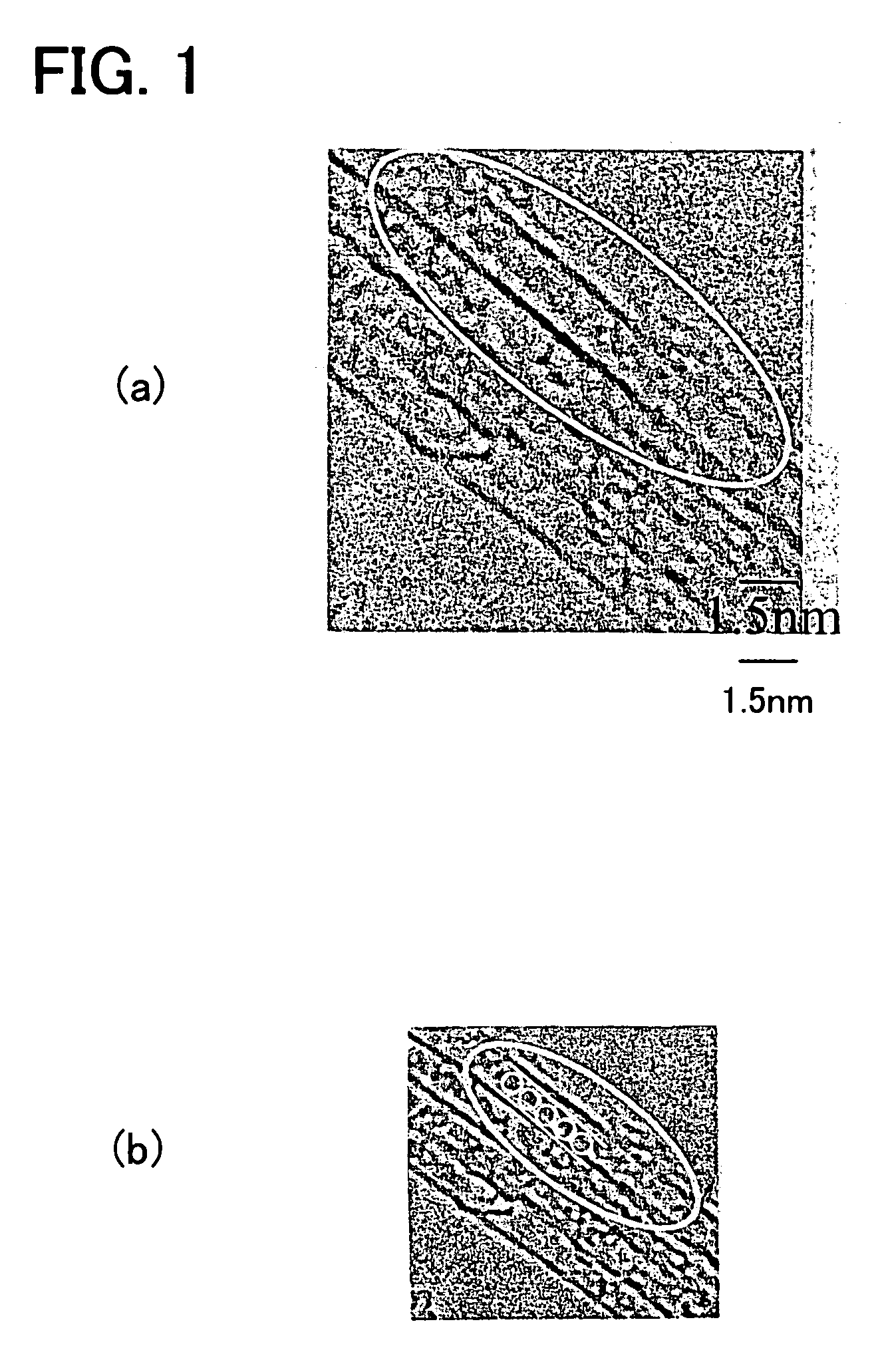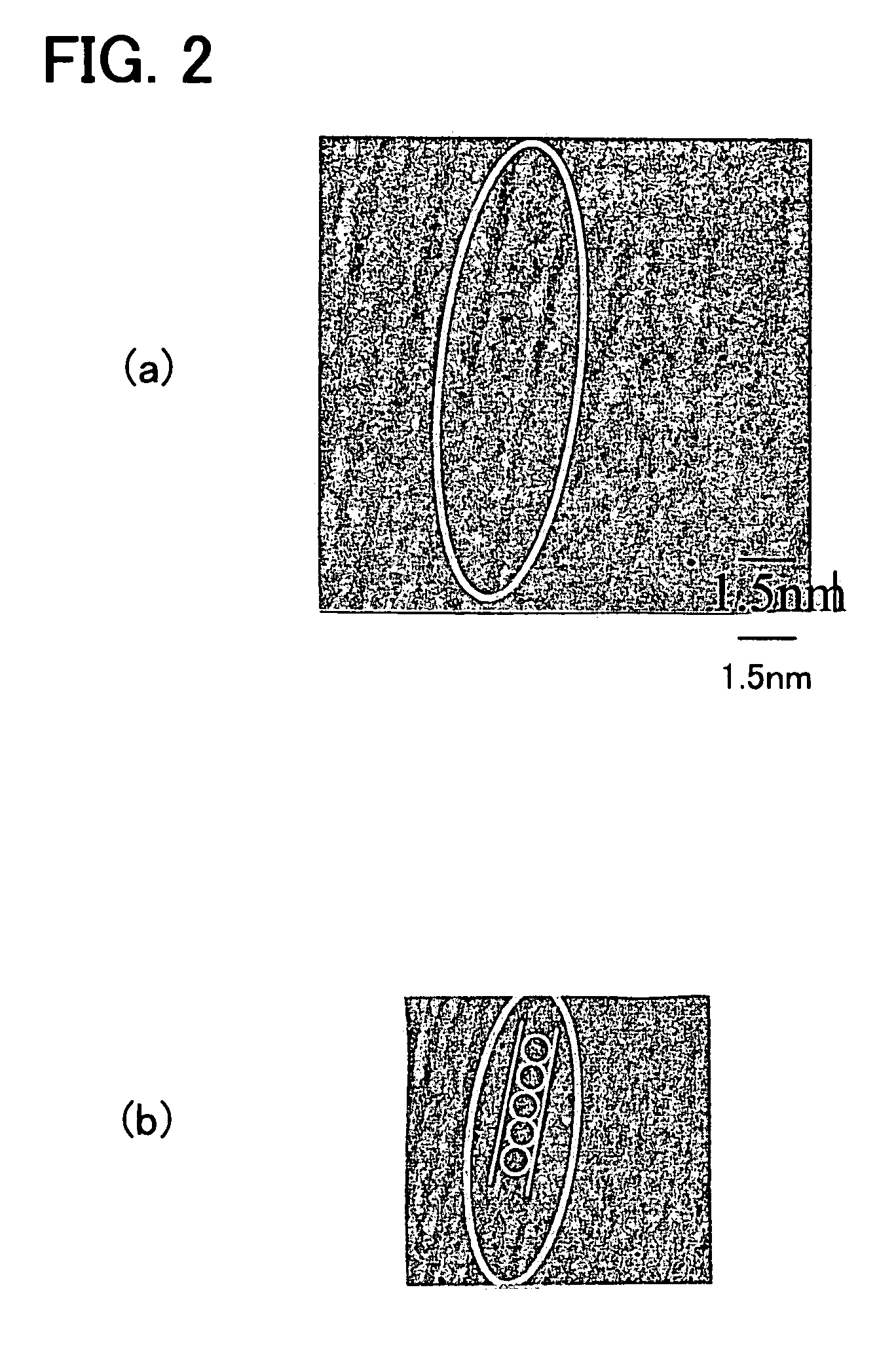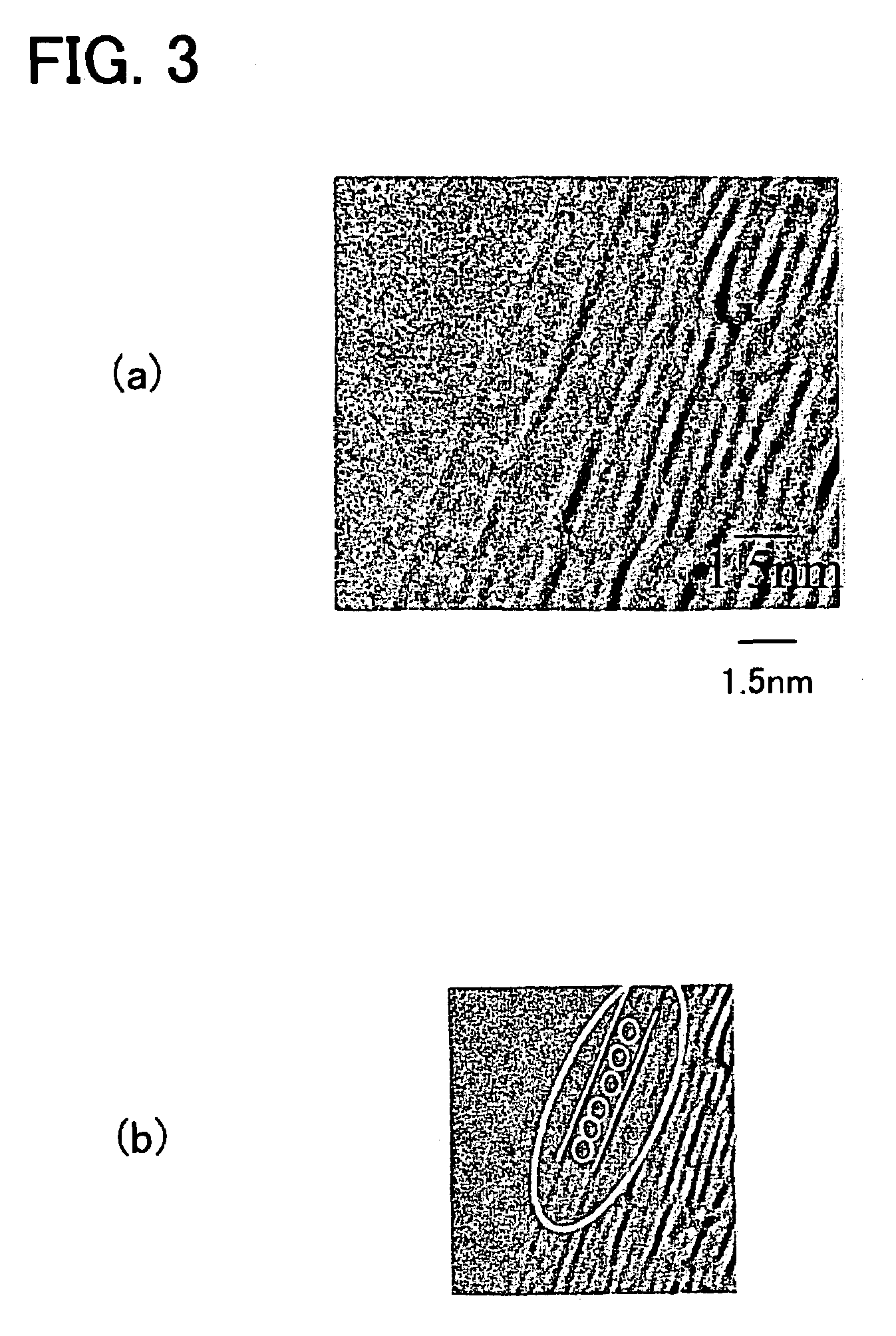Methods for manufacturing multi-wall carbon nanotubes
a carbon nanotube and multi-wall technology, applied in the field of carbon nanotubes, can solve the problems of insufficient progress of fusion of csub>60 /sub>, low number of nested tubes, and low number of tubes produced, and achieve the effect of fewer defects and efficient manufacturing
- Summary
- Abstract
- Description
- Claims
- Application Information
AI Technical Summary
Benefits of technology
Problems solved by technology
Method used
Image
Examples
examples
[0060]Oxidation treatment was performed on single-wall CNTs having an average diameter of approximately 1.5 nm, thereby opening anterior ends thereof. The single-wall CNTs, the anterior ends thereof being open, were mixed with C60 molecules, and were maintained in a vacuum (pressure; 1.0×10−3 Pa) at 450° C. for 24 hours. When the resulting products were observed using a transmission electron microscope (TEM) with magnification 500,000, C60 molecules had been filled within the single-wall CNTs, as shown in the TEM photograph of FIG. 1(a). These C60 molecules had linked to form assembled fullerenes. In this manner, the CNT hybrid structures, these being the assembled fullerenes consisting mainly of C60 housed within the CNTs, were manufactured.
[0061]In order to make the structure shown in the TEM photograph of FIG. 1(a) easier to identify, FIG. 1(b) shows a portion of the TEM photograph with a white line showing the structure entered thereon. The oval-shaped portion surrounded by the ...
PUM
 Login to View More
Login to View More Abstract
Description
Claims
Application Information
 Login to View More
Login to View More - R&D
- Intellectual Property
- Life Sciences
- Materials
- Tech Scout
- Unparalleled Data Quality
- Higher Quality Content
- 60% Fewer Hallucinations
Browse by: Latest US Patents, China's latest patents, Technical Efficacy Thesaurus, Application Domain, Technology Topic, Popular Technical Reports.
© 2025 PatSnap. All rights reserved.Legal|Privacy policy|Modern Slavery Act Transparency Statement|Sitemap|About US| Contact US: help@patsnap.com



